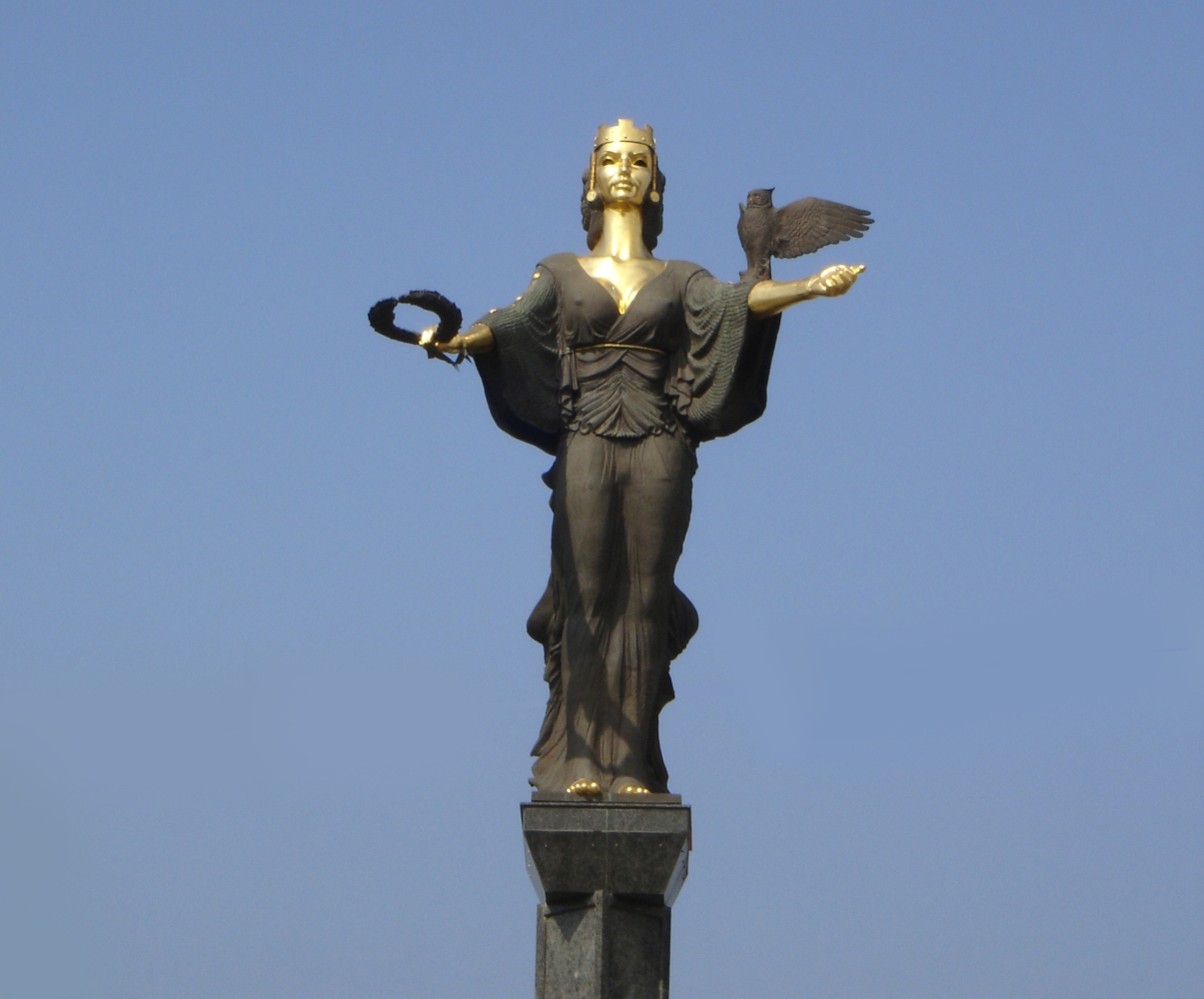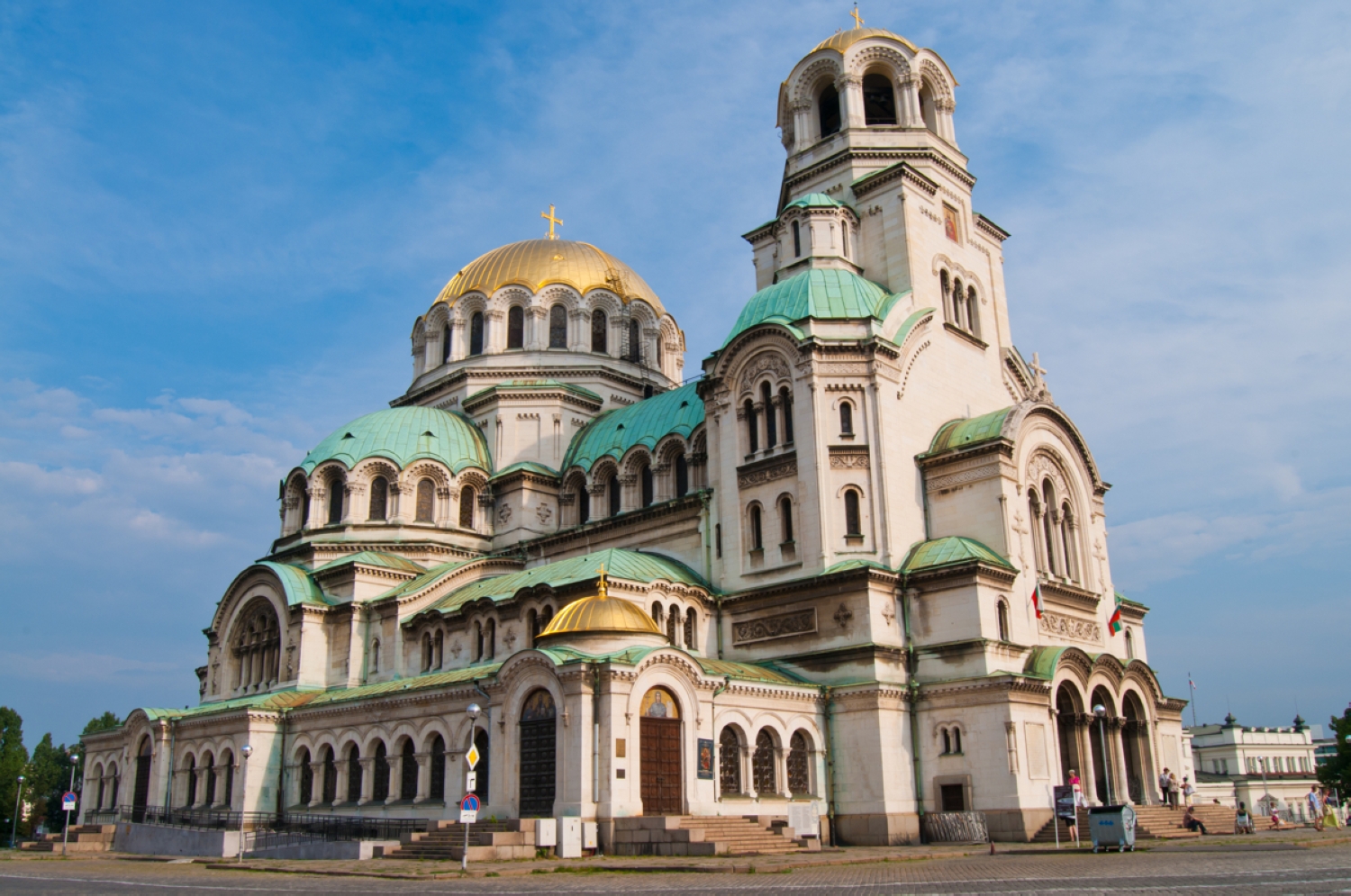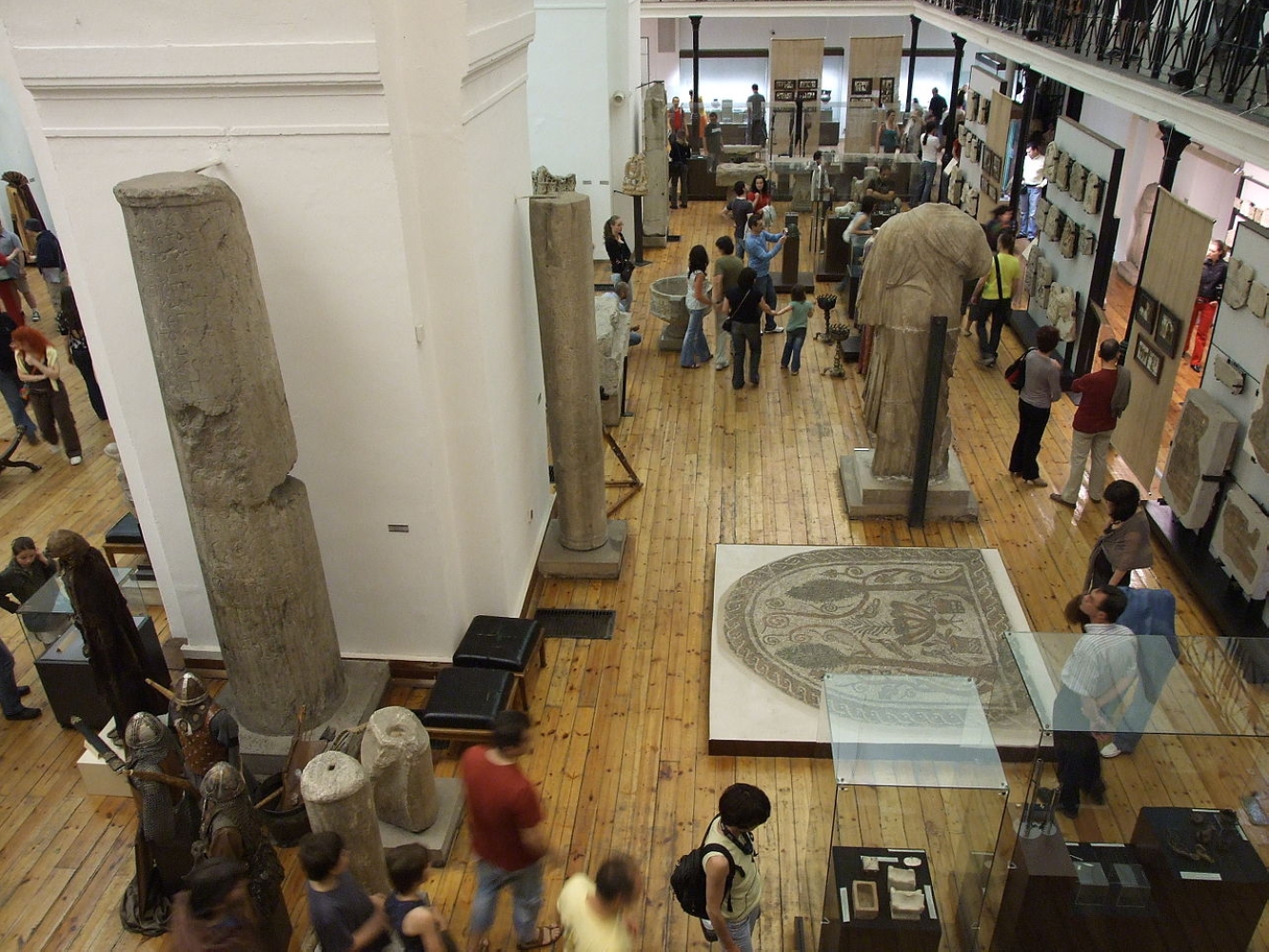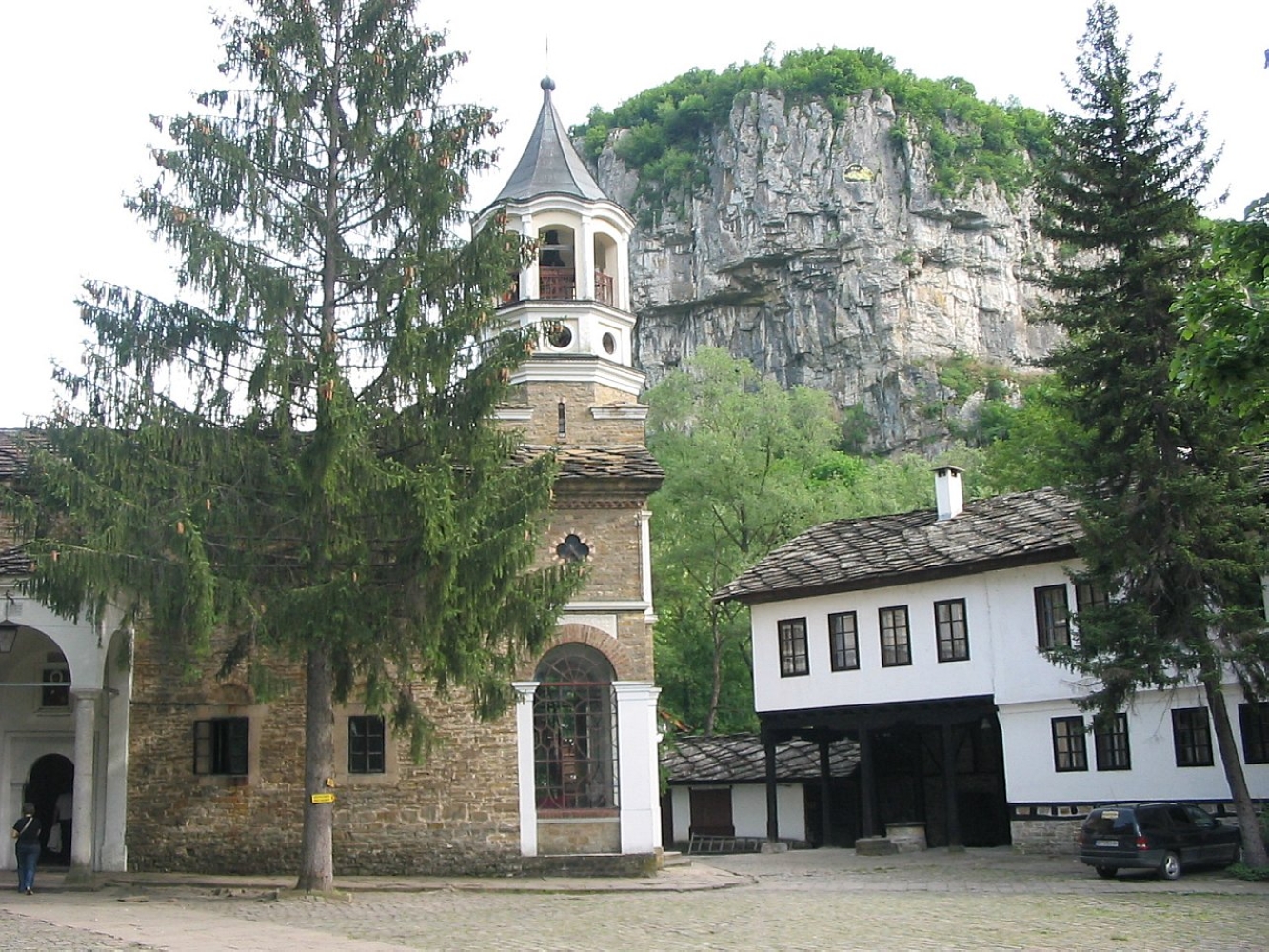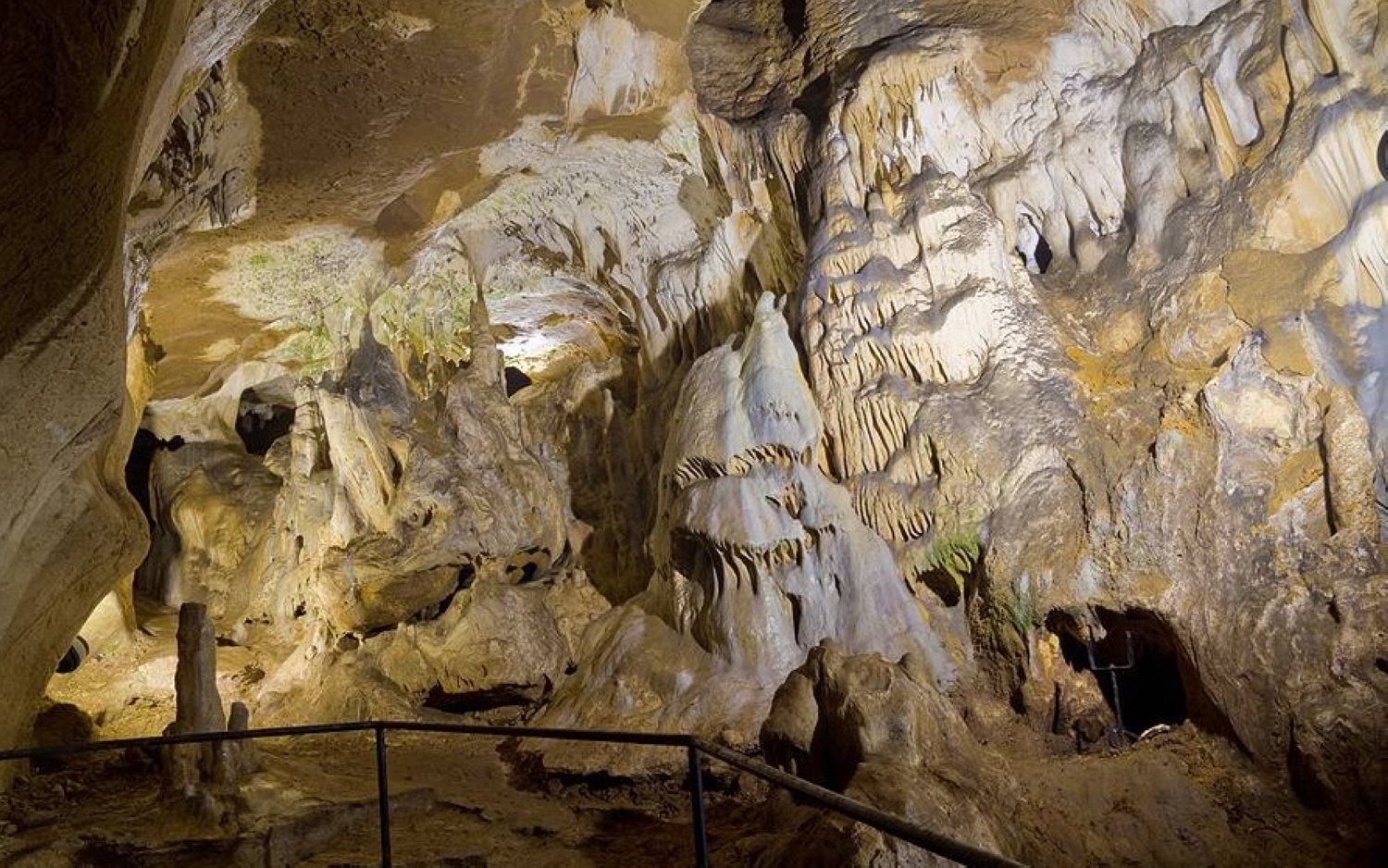Excursions
Get to know Bulgaria
Route:
Sofia - Plovdiv - Kazanlak - Sunny Beach - Golden Sands - Veliko Tarnovo - Sofia
Sofia - Plovdiv - Kazanlak - Sunny Beach - Golden Sands - Veliko Tarnovo - Sofia
|
Duration: 8 days / 7 nights |
Transport: Bus |
Send a request
Program
Day 1
Arrival in Sofia. Panoramic excursion in central Sofia. Visit of the National History Museum. Accommodation in hotel in Sofia. Free time. Overnight.
Sofia is Bulgaria’s capital and its largest city. Founded thousands of years ago, today the city continues to develop as the country’s cultural and economic center. At present, the city has a population of 1,250,000. Sofia has been settled for many millennia. In honor of its hot springs, in the 8th century BCE the Thracian tribes settled here gave the city its first name – Serdika or Serdonpolis.In the 1st century BCE, Serdika was captured by the Romans, who transformed it into a Roman city. Serdika was the favorite city of Constantine the Great (reign 306-337), who said “Serdika is my Rome.”
The National History Museum is one of the largest and richest history museums on the Balkan Peninsula. More than 700,000 cultural monuments are preserved inside it, representing the history of the present Bulgarian lands from the period 8,000 years ago to the present day. Only 10% of all these valuables and monuments are exhibited in the museum halls. The main museum exhibition is presented in five halls: Prehistory, Ancient Thrace, and the Middle Ages – First (7th-11th century) and Second Bulgarian Empire (12th - 14th century), the Bulgarian lands in the 15th - 19th century and the Third Bulgarian Empire (1878 to the present day).
Day 2
Breakfast. Departure for Plovdiv. Visit of the old city of Plovdiv. *Wine tasting in Villa Vinefera. Overnight in Plovdiv.
Plovdiv is the second largest city in Bulgaria. The town in its present appearance was built around seven hills – the hills of Plovdiv (Plovdiv Tepes) which are an inseparable part of the city’s history. Plovdiv is one of the oldest cities in Europe – the beginning of its history dates back to 4,000 years BC. In the beginning the ancient settlement was situated on the natural elevation between Nebet, Taksim and Dzhambaz hills (the Three Hills). In ancient times Thracians inhabited the Three Hills and built a fortified settlement – the largest city in Thrace. In the 4th century BC Plovdiv was conquered by Phillip of Macedonia. He gave the city one of its many names – Phillipopolis, and had it surrounded by thick fortified walls. Later the Thracians regained their power over the city, but after a series of battles in the 1st century AD it became a part the Roman Empire.
The famous Plovdiv International Fair, which annually hosts the presentation of goods and exchange of contacts and experience between sellers from all around the world, is conducted here. The town hosts theater, dancing and movie festivals, and the numerous archaeological finds of Thracian, Roman and Byzantine times not only recall the glorious past, but are successfully combined with the modern architecture of the city.
Day 3
Breakfast. Departure for Kazanlak. Visit the Museum of roses. Shipka. Overnight in Sunny Beach.
The town of Kazanlak is located in the center of the Valley of the Roses, the home of the Thracian kings, and an attractive tourist destination. The country’s largest and best preserved Thracian tombs are found here, and they are included among the UNESCO World Heritage Sites, along with the Museum of Roses. The Rosa Damascena, known as the Damask or Castile rose, is the greatest treasure in the region of Kazanlak. The rose was imported into Bulgaria centuries ago, and today it is one of the nation’s symbols. Under the influence of the country’s unique climate and soil, this rose gradually developed into a Bulgarian strain distinct from Damask roses elsewhere. The only museum in the world, dedicated to the oil-yielding plant – rose, is situated in the town of Kazanlak. The rose is one of the symbols of Bulgaria. Nowadays the Rose Museum stores more than 15 000 exponents related to rose-picking and rose-production in Bulgaria. In Bulgaria the plant was introduced by the Ottoman Turks. In 1740 a French company exported from Bulgaria the first batch of rose oil.
During that time the Bulgarian rose oil was a preferred raw material for the French perfume producers. The museum exposition includes original pictures and documents of the development of rose production, instruments for processing of the rose gardens, vessels for storing and exporting rose oil and rose water. One of the biggest attractions in the museum is a rose oil vessel which had been used for the last time in 1947 to this day a strong rose scent can still be smelled around it.
National Park Museum Shipka is located on top of Shipka Peak (1,326 m) in the Balkan Mountains, The park comprises of 26 monuments, the reconstructed battle positions, artillery batteries and dugouts of the defenders of Shipka Pass during the Russo-Turkish War from 1877 - 78. The Liberty Memorial is among the largest of the monuments in the park. Its outline resembles a medieval Bulgarian fortress and can be seen from dozens of kilometres. It was built with donations from the people from all over Bulgaria and was inaugurated on 26 August 1934. It is 31.5 m tall and 890 steps lead up to it. The powerful bronze lion – symbol of the Bulgarian state – guards the entrance to the Memorial. The other three walls of the monument bear the names Shipka, Sheinovo and Stara Zagora – the battlefields in defence of the Pass. On the ground floor under a marble sarcophagus rest the remains of Shipka’s defenders. The highest platform of the Liberty Memorial affords a beautiful panoramic view of the surroundings.
Day 4
Breakfast. Departure for Nessebar. Departure for Golden Sands. Arrival around noon. Free time. Dinner. Overnight in hotel Preslav.
Nessebar was established more than 3200 years ago. Thracians settled there at the end of the Bronze Age. They called it Melsambria, which meant the town of Melsas – that was probably the name of the founder of the settlement.
They were succeeded by the Dorians (ancient Greek tribe) who came to the town at the end of the 6th century BC. Under their control the settlement expanded: a fortification wall was built, residential quarters emerged, etc. At the beginning of the 1st century AD the town became part of the Roman Empire. It was then when they started calling it Mesembria. The town continued to be an important economic and cultural centre. After the capital of the Roman Empire moved to Constantinople and Christianity became the official religion, there was a building boom of Christian temples on the territory of Mesembria. The town became part of the First Bulgarian Empire in 812 when Bulgarian ruler Khan Krum conquered it. The Slavs who settled there started calling it Nesebar. The town played a crucial role during the reigns of Tsars Kaloyan (1197-1207), Ivan Asen II (1218 - 1241), and Konstantine Tikh (1257-1277).
Today the old and the new part of the town are connected by a narrow isthmus. The old town lies on a small peninsula. Because of its exceptional cultural and historical value Nesebar was declared a museum, tourist, and resort complex of international importance by virtue of Ordinance No 243 of the Council of Ministers of 18 July 1956. In 1983 Old Nesebar was included in the List of World Cultural Heritage Sites of UNESCO.
Day 5
Breakfast. Lunch. Free day in Golden Sands. Dinner. Overnight in hotel Preslav.
Breakfast. Lunch. Free day in Golden Sands. Dinner. Overnight in hotel Preslav. Golden Sands is one of the oldest and largest Black Sea resorts in Bulgaria. It is situated at a distance of 17 km north from Varna city, in close proximity to the breezy forests of the natural park “Golden Sands”. The name of the resort comes from the wonderful golden sand. According to a local legend, pirates buried a golden treasure here, and in order to avenge them nature turned it into fine golden sand. The beach line here is 3.5 km long, and in some places its width reaches 100 meters.
The conditions for active rest are attractive for young people who seek entertainment, as well as for families with children. There is a rich variety of attractions for the youngest ones – an aqua park, various installations and slides for children, children sports centers, pony riding, and the animators in the entire complex take care of the well being and the security of children. Golden Sands is a resort which provides its guests with diverse sports options. Diving centers, tennis courts, volleyball fields, platforms for archery, a bowling hall, paintball, etc. are available here. For the admirers of water sports there are good conditions for yachting, water skiing, balloons rides, surfing, jet skiing and water parachuting.
Day 6
Breakfast. Lunch. Free day in Golden Sands. Dinner. Overnight in hotel Preslav.
Day 7
Breakfast. Wine tasting in Lyaskovets. Departure for Veliko Tarnovo. Visit of Dryanovo Monastery, Bacho Kiro. Overnight in Gabrovo.
Veliko Tarnovo is one of the oldest towns in the country, as its history dates back to more than five thousand years ago. The upsurge of Veliko Tarnovo is related to the period of the Second Bulgarian Empire (1185 – 1393). In 1185 the town was declared a capital of the restored Bulgarian State by the brothers Asen and Petar, who declared the end of the Byzantine dominion, which continued for 167 years. After its selection to be a capital, the town developed fast, as within the period 12th – 14th century it was the most unconquerable Bulgarian fortress, as well as a cultural and intellectual center of Bulgaria.
The most significant monument of culture in Veliko Tarnovo is the medieval fortress Tsarevets, situated on the homonymous peak, surrounded on three sides by the river Yantra. Excavations show that although Tsarevets is surrounded by a fortified wall, it was not a closed fortress, but a real medieval town, in the center of which the following objects were rising: the palace, the church “St. Petka”, multiple residential and economic buildings, water reservoirs and battle towers. The Patriarch’s residence was on the highest part of Tsarevets, and the Patriarch’s church “The Ascension of Christ” was also in close proximity.
For centuries the Dryanovo Monastery “St. Archangel Michael” has been one of the centers of development of the Bulgarian Christianity and culture, and nowadays it continues to attract worshipers and tourists. The Dryanovo Monastery was established in the 12th century during the time of Tsar Kaloyan (1168– 1207). For the first time the monastery was built 2 km from the place where it is situated now. In 1393 the Ottoman Turks burned it down to ashes; in 16th century the local people restored it on the other bank of the river, but this time the holy monastery was also demolished. The Monastery “St. Archangel Michael” is one of the centers of preparation of the April Uprising (1976) for liberation from Ottoman Dominion. Upon the rout of the uprising the monastery was demolished again. Soon after that it was partially restored and on 3 April 1877 its main temple was solemnly consecrated.
Bacho Kiro Cave is an intricate 3600 m-long maze of cave rooms and forking passages. There are two routes for visitors to take in the cave. The first one is about 700 m long and takes 70 minutes to cover. The short route is 350 m long and can be covered in approximately 30 minutes.
For thousands of years rivers have been forming the rooms and the chambers of the cave. The beautiful stalactites, stalagmites, and columns have taken various bizarre shapes. The cave has impressive lighting system that allows visitors to better see the various shapes of rocks, such as the Stone Flower, the Jellyfish, the Lonely Column, the Elephant, etc. The Rain Room, the Concert Room, and the Guest Room are particularly interesting.
Day 8.
Breakfast. Departure for Etara. Lunch. Departure for Sofia.
The Architectural and Ethnographic Complex Etar is situated on the outskirts of the town of Gabrovo. It is an open air museum. The purpose of which is to present the architecture and the style of life in Gabrovo and the region during the second half of the 18th century and the beginning of the 19th century.
The museum contains a total of 50 sites – houses with craft workshops, water installations and other buildings. The only collection in Bulgaria of technical installations driven by water – filling mills, water mills, grindstones, etc., are situated there. 16 houses can be seen on the crafts bazaar (the central commercial street) in the Etar, which are exact copies of buildings existing in the past in Gabrovo and the region. On the crafts street the visitors can watch in real time the work of the craftsmen. Multiple crafts are presented – bell-making (manufacturing of wrought bells for animals), pottery-making, sugar-making (manufacturing of sugar articles), furriery, manufacturing of copper vessels, etc. Besides observing the authentic technology which the craftsmen are using, the visitors can purchase the articles made before their eyes.
The price includes:
• Transport with comfortable bus
• Guide throughout the whole excursion
• Overnights:
1 night in Sofia – BB
1 night in Plovdiv - BB,
1 night in Sunny beach – BB
3 nights in hotel Preslav – Golden sands – AI
1 night in Gabrovo - BB
The price does not include:
• Entrance fees for the visited sights
• Lunch in Etarа
• Tourist insurance
Additional charges:
Lunch in Etara – free consummation, app. 10 EUR per person.
Entrances fees:
• National Historical Museum, Sofia (5 Euro)
• Museum of Roses, Kazanlak (1,5 Euro)
• National Park-Museum Shipka
• Shipka Peak (1 Euro)
• Nesebar Architectural-Historical Reserve (2,5 Euro)
• Architectural and Ethnographic Complex Etar (2 Euro)
• Dryanovo Monastery “St. Archangel Michael” (1 Euro)
• Bacho Kiro Cave (2 Euro)
• Wine tasting in Lyaskovets (10 Euro)
• Optional: Wine tasting in Villa Vinifera (9-16 Euro)
Arrival in Sofia. Panoramic excursion in central Sofia. Visit of the National History Museum. Accommodation in hotel in Sofia. Free time. Overnight.
Sofia is Bulgaria’s capital and its largest city. Founded thousands of years ago, today the city continues to develop as the country’s cultural and economic center. At present, the city has a population of 1,250,000. Sofia has been settled for many millennia. In honor of its hot springs, in the 8th century BCE the Thracian tribes settled here gave the city its first name – Serdika or Serdonpolis.In the 1st century BCE, Serdika was captured by the Romans, who transformed it into a Roman city. Serdika was the favorite city of Constantine the Great (reign 306-337), who said “Serdika is my Rome.”
The National History Museum is one of the largest and richest history museums on the Balkan Peninsula. More than 700,000 cultural monuments are preserved inside it, representing the history of the present Bulgarian lands from the period 8,000 years ago to the present day. Only 10% of all these valuables and monuments are exhibited in the museum halls. The main museum exhibition is presented in five halls: Prehistory, Ancient Thrace, and the Middle Ages – First (7th-11th century) and Second Bulgarian Empire (12th - 14th century), the Bulgarian lands in the 15th - 19th century and the Third Bulgarian Empire (1878 to the present day).
Day 2
Breakfast. Departure for Plovdiv. Visit of the old city of Plovdiv. *Wine tasting in Villa Vinefera. Overnight in Plovdiv.
Plovdiv is the second largest city in Bulgaria. The town in its present appearance was built around seven hills – the hills of Plovdiv (Plovdiv Tepes) which are an inseparable part of the city’s history. Plovdiv is one of the oldest cities in Europe – the beginning of its history dates back to 4,000 years BC. In the beginning the ancient settlement was situated on the natural elevation between Nebet, Taksim and Dzhambaz hills (the Three Hills). In ancient times Thracians inhabited the Three Hills and built a fortified settlement – the largest city in Thrace. In the 4th century BC Plovdiv was conquered by Phillip of Macedonia. He gave the city one of its many names – Phillipopolis, and had it surrounded by thick fortified walls. Later the Thracians regained their power over the city, but after a series of battles in the 1st century AD it became a part the Roman Empire.
The famous Plovdiv International Fair, which annually hosts the presentation of goods and exchange of contacts and experience between sellers from all around the world, is conducted here. The town hosts theater, dancing and movie festivals, and the numerous archaeological finds of Thracian, Roman and Byzantine times not only recall the glorious past, but are successfully combined with the modern architecture of the city.
Day 3
Breakfast. Departure for Kazanlak. Visit the Museum of roses. Shipka. Overnight in Sunny Beach.
The town of Kazanlak is located in the center of the Valley of the Roses, the home of the Thracian kings, and an attractive tourist destination. The country’s largest and best preserved Thracian tombs are found here, and they are included among the UNESCO World Heritage Sites, along with the Museum of Roses. The Rosa Damascena, known as the Damask or Castile rose, is the greatest treasure in the region of Kazanlak. The rose was imported into Bulgaria centuries ago, and today it is one of the nation’s symbols. Under the influence of the country’s unique climate and soil, this rose gradually developed into a Bulgarian strain distinct from Damask roses elsewhere. The only museum in the world, dedicated to the oil-yielding plant – rose, is situated in the town of Kazanlak. The rose is one of the symbols of Bulgaria. Nowadays the Rose Museum stores more than 15 000 exponents related to rose-picking and rose-production in Bulgaria. In Bulgaria the plant was introduced by the Ottoman Turks. In 1740 a French company exported from Bulgaria the first batch of rose oil.
During that time the Bulgarian rose oil was a preferred raw material for the French perfume producers. The museum exposition includes original pictures and documents of the development of rose production, instruments for processing of the rose gardens, vessels for storing and exporting rose oil and rose water. One of the biggest attractions in the museum is a rose oil vessel which had been used for the last time in 1947 to this day a strong rose scent can still be smelled around it.
National Park Museum Shipka is located on top of Shipka Peak (1,326 m) in the Balkan Mountains, The park comprises of 26 monuments, the reconstructed battle positions, artillery batteries and dugouts of the defenders of Shipka Pass during the Russo-Turkish War from 1877 - 78. The Liberty Memorial is among the largest of the monuments in the park. Its outline resembles a medieval Bulgarian fortress and can be seen from dozens of kilometres. It was built with donations from the people from all over Bulgaria and was inaugurated on 26 August 1934. It is 31.5 m tall and 890 steps lead up to it. The powerful bronze lion – symbol of the Bulgarian state – guards the entrance to the Memorial. The other three walls of the monument bear the names Shipka, Sheinovo and Stara Zagora – the battlefields in defence of the Pass. On the ground floor under a marble sarcophagus rest the remains of Shipka’s defenders. The highest platform of the Liberty Memorial affords a beautiful panoramic view of the surroundings.
Day 4
Breakfast. Departure for Nessebar. Departure for Golden Sands. Arrival around noon. Free time. Dinner. Overnight in hotel Preslav.
Nessebar was established more than 3200 years ago. Thracians settled there at the end of the Bronze Age. They called it Melsambria, which meant the town of Melsas – that was probably the name of the founder of the settlement.
They were succeeded by the Dorians (ancient Greek tribe) who came to the town at the end of the 6th century BC. Under their control the settlement expanded: a fortification wall was built, residential quarters emerged, etc. At the beginning of the 1st century AD the town became part of the Roman Empire. It was then when they started calling it Mesembria. The town continued to be an important economic and cultural centre. After the capital of the Roman Empire moved to Constantinople and Christianity became the official religion, there was a building boom of Christian temples on the territory of Mesembria. The town became part of the First Bulgarian Empire in 812 when Bulgarian ruler Khan Krum conquered it. The Slavs who settled there started calling it Nesebar. The town played a crucial role during the reigns of Tsars Kaloyan (1197-1207), Ivan Asen II (1218 - 1241), and Konstantine Tikh (1257-1277).
Today the old and the new part of the town are connected by a narrow isthmus. The old town lies on a small peninsula. Because of its exceptional cultural and historical value Nesebar was declared a museum, tourist, and resort complex of international importance by virtue of Ordinance No 243 of the Council of Ministers of 18 July 1956. In 1983 Old Nesebar was included in the List of World Cultural Heritage Sites of UNESCO.
Day 5
Breakfast. Lunch. Free day in Golden Sands. Dinner. Overnight in hotel Preslav.
Breakfast. Lunch. Free day in Golden Sands. Dinner. Overnight in hotel Preslav. Golden Sands is one of the oldest and largest Black Sea resorts in Bulgaria. It is situated at a distance of 17 km north from Varna city, in close proximity to the breezy forests of the natural park “Golden Sands”. The name of the resort comes from the wonderful golden sand. According to a local legend, pirates buried a golden treasure here, and in order to avenge them nature turned it into fine golden sand. The beach line here is 3.5 km long, and in some places its width reaches 100 meters.
The conditions for active rest are attractive for young people who seek entertainment, as well as for families with children. There is a rich variety of attractions for the youngest ones – an aqua park, various installations and slides for children, children sports centers, pony riding, and the animators in the entire complex take care of the well being and the security of children. Golden Sands is a resort which provides its guests with diverse sports options. Diving centers, tennis courts, volleyball fields, platforms for archery, a bowling hall, paintball, etc. are available here. For the admirers of water sports there are good conditions for yachting, water skiing, balloons rides, surfing, jet skiing and water parachuting.
Day 6
Breakfast. Lunch. Free day in Golden Sands. Dinner. Overnight in hotel Preslav.
Day 7
Breakfast. Wine tasting in Lyaskovets. Departure for Veliko Tarnovo. Visit of Dryanovo Monastery, Bacho Kiro. Overnight in Gabrovo.
Veliko Tarnovo is one of the oldest towns in the country, as its history dates back to more than five thousand years ago. The upsurge of Veliko Tarnovo is related to the period of the Second Bulgarian Empire (1185 – 1393). In 1185 the town was declared a capital of the restored Bulgarian State by the brothers Asen and Petar, who declared the end of the Byzantine dominion, which continued for 167 years. After its selection to be a capital, the town developed fast, as within the period 12th – 14th century it was the most unconquerable Bulgarian fortress, as well as a cultural and intellectual center of Bulgaria.
The most significant monument of culture in Veliko Tarnovo is the medieval fortress Tsarevets, situated on the homonymous peak, surrounded on three sides by the river Yantra. Excavations show that although Tsarevets is surrounded by a fortified wall, it was not a closed fortress, but a real medieval town, in the center of which the following objects were rising: the palace, the church “St. Petka”, multiple residential and economic buildings, water reservoirs and battle towers. The Patriarch’s residence was on the highest part of Tsarevets, and the Patriarch’s church “The Ascension of Christ” was also in close proximity.
For centuries the Dryanovo Monastery “St. Archangel Michael” has been one of the centers of development of the Bulgarian Christianity and culture, and nowadays it continues to attract worshipers and tourists. The Dryanovo Monastery was established in the 12th century during the time of Tsar Kaloyan (1168– 1207). For the first time the monastery was built 2 km from the place where it is situated now. In 1393 the Ottoman Turks burned it down to ashes; in 16th century the local people restored it on the other bank of the river, but this time the holy monastery was also demolished. The Monastery “St. Archangel Michael” is one of the centers of preparation of the April Uprising (1976) for liberation from Ottoman Dominion. Upon the rout of the uprising the monastery was demolished again. Soon after that it was partially restored and on 3 April 1877 its main temple was solemnly consecrated.
Bacho Kiro Cave is an intricate 3600 m-long maze of cave rooms and forking passages. There are two routes for visitors to take in the cave. The first one is about 700 m long and takes 70 minutes to cover. The short route is 350 m long and can be covered in approximately 30 minutes.
For thousands of years rivers have been forming the rooms and the chambers of the cave. The beautiful stalactites, stalagmites, and columns have taken various bizarre shapes. The cave has impressive lighting system that allows visitors to better see the various shapes of rocks, such as the Stone Flower, the Jellyfish, the Lonely Column, the Elephant, etc. The Rain Room, the Concert Room, and the Guest Room are particularly interesting.
Day 8.
Breakfast. Departure for Etara. Lunch. Departure for Sofia.
The Architectural and Ethnographic Complex Etar is situated on the outskirts of the town of Gabrovo. It is an open air museum. The purpose of which is to present the architecture and the style of life in Gabrovo and the region during the second half of the 18th century and the beginning of the 19th century.
The museum contains a total of 50 sites – houses with craft workshops, water installations and other buildings. The only collection in Bulgaria of technical installations driven by water – filling mills, water mills, grindstones, etc., are situated there. 16 houses can be seen on the crafts bazaar (the central commercial street) in the Etar, which are exact copies of buildings existing in the past in Gabrovo and the region. On the crafts street the visitors can watch in real time the work of the craftsmen. Multiple crafts are presented – bell-making (manufacturing of wrought bells for animals), pottery-making, sugar-making (manufacturing of sugar articles), furriery, manufacturing of copper vessels, etc. Besides observing the authentic technology which the craftsmen are using, the visitors can purchase the articles made before their eyes.
The price includes:
• Transport with comfortable bus
• Guide throughout the whole excursion
• Overnights:
1 night in Sofia – BB
1 night in Plovdiv - BB,
1 night in Sunny beach – BB
3 nights in hotel Preslav – Golden sands – AI
1 night in Gabrovo - BB
The price does not include:
• Entrance fees for the visited sights
• Lunch in Etarа
• Tourist insurance
Additional charges:
Lunch in Etara – free consummation, app. 10 EUR per person.
Entrances fees:
• National Historical Museum, Sofia (5 Euro)
• Museum of Roses, Kazanlak (1,5 Euro)
• National Park-Museum Shipka
• Shipka Peak (1 Euro)
• Nesebar Architectural-Historical Reserve (2,5 Euro)
• Architectural and Ethnographic Complex Etar (2 Euro)
• Dryanovo Monastery “St. Archangel Michael” (1 Euro)
• Bacho Kiro Cave (2 Euro)
• Wine tasting in Lyaskovets (10 Euro)
• Optional: Wine tasting in Villa Vinifera (9-16 Euro)






